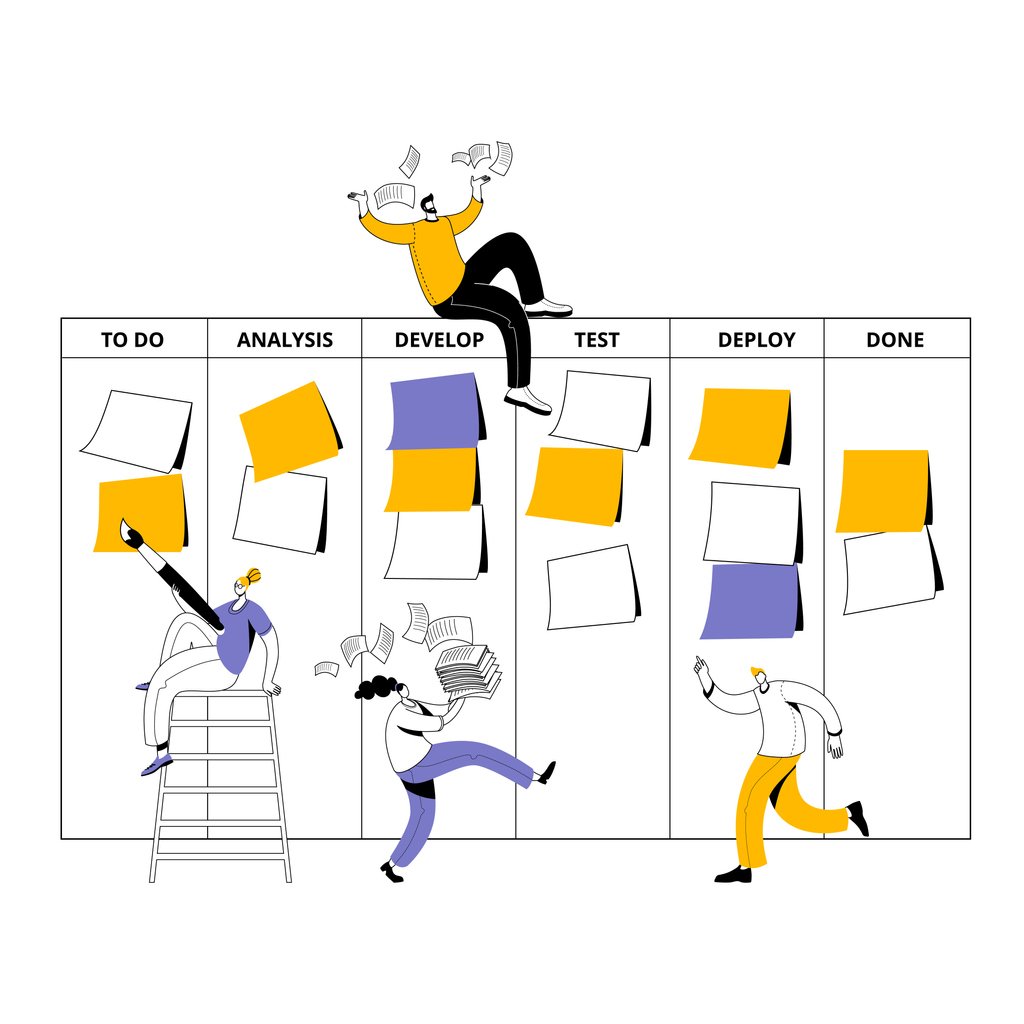What is Kanban?
Kanban is a useful way to visualise and manage your team’s flow of work.
It originates from lean manufacturing. The first Kanban System was developed in the 1940s by Taiichi Ohno, an industrial engineer at Toyota. Throughout the 90s and early 2000s, software development teams experimented with applying aspects of Ohno’s methods to their ways of working. Over time, the Kanban Method evolved as the result of the experience of leading figures in the lean and agile community, such as David Anderson, Dominica DeGrandis, Corey Ladas and Daniel S. Vacanti.
Kanban can be used as a standalone framework for product development teams, or it can be used alongside Scrum. The powerful simplicity of the method means that anybody can use a Kanban board to visualise and manage their flow of work, whether working independently or as part of a team.
The Kanban Board
A Kanban board allows you to visualise your flow of work, identify bottlenecks and delays, and find ways to improve efficiency.
Each column on the board represents a step in a system that your work needs to flow through in order to be completed. The titles of these columns should be specific to your particular system of working, but in a very simplified system you could label the columns as ‘To Do’, ‘Doing’ and ‘Done’.
Work is represented by cards which flow through the board as they enter the different steps in the process. Each Kanban card represents a single item of work.
Methods for OPtimising Flow
Once you have a Kanban Board set up, you can follow some simple rules to optimise how work flows through your system to increase efficiency. These rules are:
Limit Work in Progress (WIP)
By setting a limit on the number of items that can be in progress at any one time, your team is able to maintain focussed and avoid multitasking. Focussing on one thing at a time, or doing a small, manageable number of things is always more efficient than trying to do lots of things at the same time.Operate a Pull system
An item of work should only be “pulled” into the next step when there is available capacity. Seeing items of work stack up on a particular column of your Kanban board quickly tells you that there is a bottleneck in this part of the system that needs resolving.Avoid work items piling up or spending too much time on the board
Setting WIP limits and operating a Pull system with help to avoid this, but noting how long items have been on your board can help you to realise when work is not flowing efficiently.
Further Reading
This article is an intentionally quick and simple overview of Kanban so that anybody could get started with their own Kanban board. For a deeper dive into the theory behind Kanban and some of the more detailed methods that can be applied, try the following resources:
Kanban: Successful Evolutionary Change for Your Technology Business by David J. Anderson
The Kanban Guide by Daniel S Vacanti and John Coleman

